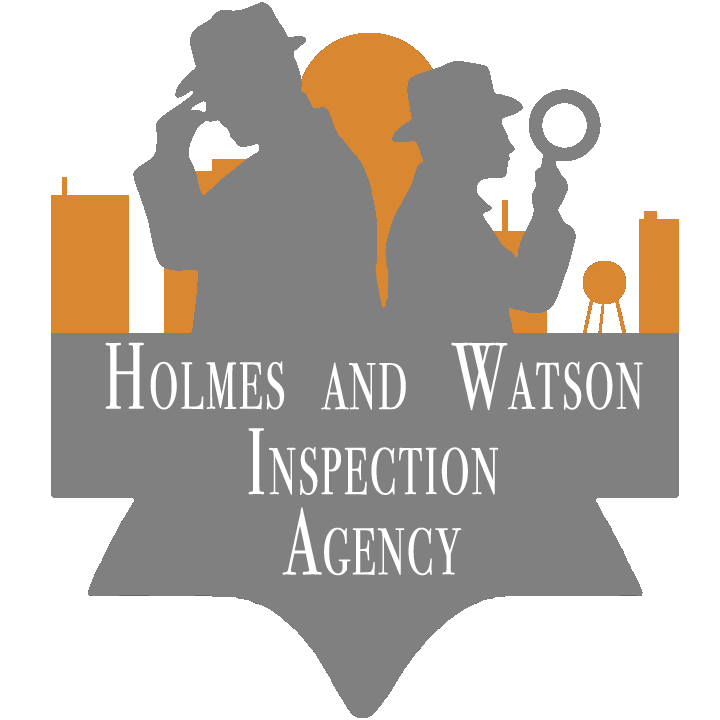Chapter 38: The Ephemeral Trails, using a thermal imaging camera to find moisture.
- Daniel Barber

- Aug 18, 2023
- 3 min read
..The soft glow of gas lamps cast a warm ambiance in the sitting room of 221B Baker Street, where Sherlock Holmes and Dr. John Watson awaited their next client...
The ticking of the clock on the mantelpiece echoed in the room, a constant reminder of the passage of time. Soon, a knock at the door broke the silence, and Mrs. Hudson ushered in a gentleman in a state of evident concern.
"Mr. Abernathy, I presume?" Holmes inquired, his piercing gaze fixed upon their visitor.
The man nodded, his face a tapestry of anxiety. "Yes, that's me. I've heard that you are the best inspectors in the Triad, and I'm in desperate need of your assistance."
"Please, take a seat," Watson gestured to the well-worn armchair across from Holmes. "Tell us what troubles you, Mr. Abernathy."
Abernathy took a deep breath and began recounting his tale. "You see, I am an architect, and I have been working on the restoration of a historic building downtown. We recently encountered an issue of elevated moisture on the interior walls. It's been causing damage and raising concerns among our clients. We've heard of a technology involving infrared cameras that can detect moisture on surfaces. We hoped you could shed some light on this matter."
Holmes leaned back, steepling his fingers in thought. "Indeed, Mr. Abernathy, you're referring to thermographic imaging. Infrared cameras are equipped with sensors that detect heat radiation, allowing them to capture differences in temperature on surfaces."
Watson chimed in, "When it comes to detecting moisture, infrared cameras can be quite useful. Moisture retains heat differently than dry surfaces, and this variance is picked up by the camera. However, it's essential to clarify a common misconception. Infrared cameras do not allow us to see through walls like an X-ray."
Abernathy's brow furrowed. "But I've heard tales of law enforcement agencies using thermal imaging to catch criminals hiding behind walls."
Holmes nodded, a wry smile touching his lips. "While it is true that thermal imaging can detect heat sources through barriers, it's not the same as seeing through solid walls as if they were transparent. The heat signatures are a result of differences in temperature, not a clear view of the objects behind the wall."
Watson took over, explaining further. "Think of it as if you were looking at a painting. You can see the colors and shapes on the canvas, but you can't see what's on the other side of the painting, hidden from view."
Abernathy's confusion began to dissipate as the explanation settled in. "So, you're saying that while infrared cameras can help detect moisture on surfaces, they can't actually provide us with a direct look into walls?"
"Exactly," Holmes affirmed. "Infrared cameras are tools that offer valuable insights into temperature variations on surfaces, and they are a valuable asset in diagnosing issues like elevated moisture. However, they do not possess the mystical power to peer through solid objects."
Abernathy's expression shifted from worry to relief. "Thank you both for clarifying this matter. I feel much better informed now. Your reputation is well-deserved."
"We're glad to have been of assistance," Watson replied with a smile.
Holmes leaned forward, his eyes gleaming with intellectual curiosity. "Mr. Abernathy, if you would be willing to provide more details about the building and the specific areas affected by moisture, I believe we could offer some guidance on how to address the issue."
And so, in the dimly lit room of 221B Baker Street, the conversation flowed, combining the wisdom of the past with the tools of the present, as the timeless duo of Holmes and Watson delved into yet another enigma, where science and deduction intertwined to unravel the mysteries that shrouded the modern world.

Cliff Notes:
- Infrared cameras use heat radiation to capture temperature differences on surfaces.
- Infrared cameras can't see through walls like X-rays, but can detect heat sources through barriers.
- To use a painting analogy: you can see the painting's colors and shapes, but not what's on the other side.
- Infrared cameras can't directly look into walls but are useful for detecting moisture.





Comments